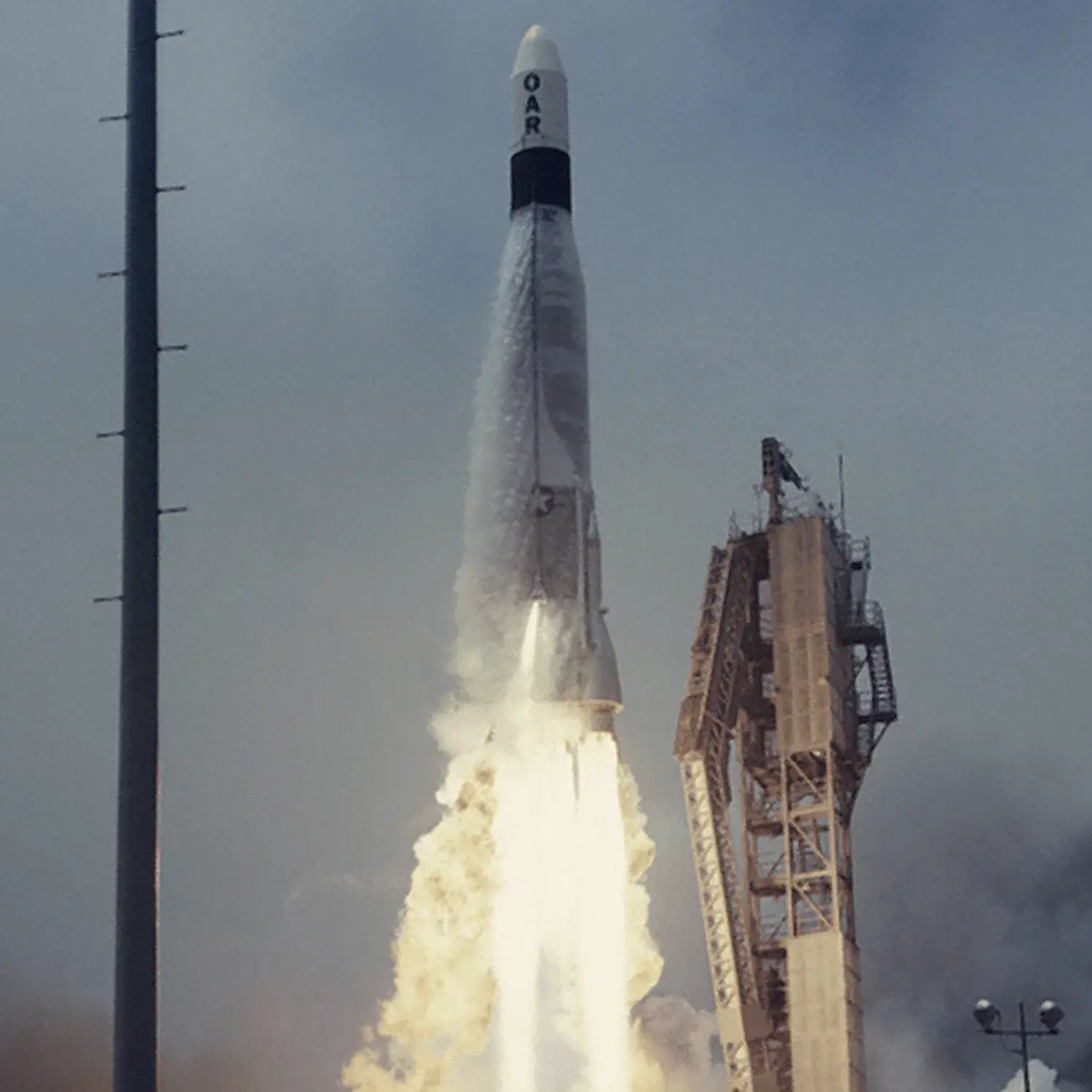OV1-17/OV1-18/OV1-19
Launch Success
Liftoff Time (GMT)
07:47:00
Tuesday March 18, 1969
Mission Details
OV1-17
OV1-17 was one of four research satellites injected into orbit simultaneously from a single launch vehicle. The spacecraft was an 81-cm-long cylinder measuring 69 cm in diameter and was fitted with hemispheric multifaced solar panel domes on either end. Proper satellite orientation was maintained by a gravity-gradient stabilization system consisting of three 15.5-m-long horizontal booms forming a 'y' and two 19-m-long vertical booms. OV1-17 carried a variety of experiments to measure incoming solar electromagnetic radiation and the reaction of such radiation with the Earth's outer atmosphere. Included were instrumentation for making: (1) Solar, X-ray, particle, and electric field measurements (2) Horizontal dayglow and nightglow measurements (3) Extremely low-frequency radio propagation studies. The spacecraft was also fitted with a meteor trail calibration beacon and a panel of 14 cadmium-sulfide solar cells to evaluate the performance and radiation resistance of such cells in a space environment. The spacecraft failed to achieve proper stabilization, thereby reducing the applicability of data from many of the experiments. OV1-17 reentered the earth's atmosphere on March 5, 1970.
Low Earth Orbit
1 Payload
142 kilograms
OV1-18
OV1-18 was one of four research satellites injected into orbit simultaneously from a single launch vehicle. The spacecraft was an 81-cm-long cylinder measuring 69 cm in diameter and was fitted with hemispheric multifaced solar panel domes on each end. Proper satellite orientation was maintained through a gravity gradient stabilization system consisting of three horizontal booms, 15.5 m long and forming a 'y', and two 19-m-long vertical booms. The satellite was also fitted with a large disc-shaped RFI antenna. OV1-18 carried a variety of experiments to make a detailed study of the characteristics of the ionosphere as they affect radio wave propagation, especially the causes of anomalous or unusual effects on the communication, detection, control, and tracking systems. The spacecraft was also fitted with experiments to gather information on the horizontal ion density gradients, electric fields, and gamma rays. The gravity gradient booms failed to deploy properly after launch. The resulting spacecraft instability reduced the applicability of data from many of the experiments. OV1-18 was placed operationally off in August 1970. The spacecraft reentered the Earth's atmosphere on March 5, 1971.
Low Earth Orbit
1 Payload
125 kilograms
OV1-19
OV1-19 was one of four research satellites injected into orbit simultaneously from a single launch vehicle. The spacecraft was an 81-cm-long cylinder measuring 69 cm in diameter and was fitted with hemispheric multifaced solar panel domes on either end. The spin-stabilized spacecraft had two major objectives: (1) To make a detailed study of events causing and sustaining trapped radiation in the Van Allen belts. (2) To study the hazards to humans of incoming and trapped radiation. The spacecraft performed normally from launch until early 1970 when serious problems developed in its telemetry system. The amount of useful data continually declined during this period, and the spacecraft was deactivated in March 1970.
Low Earth Orbit
1 Payload
425 kilograms
Rocket

Launch Site
Stats
Atlas-OV1
10th
Mission
1st
Mission of 1969
1969
30th
Orbital launch attempt
